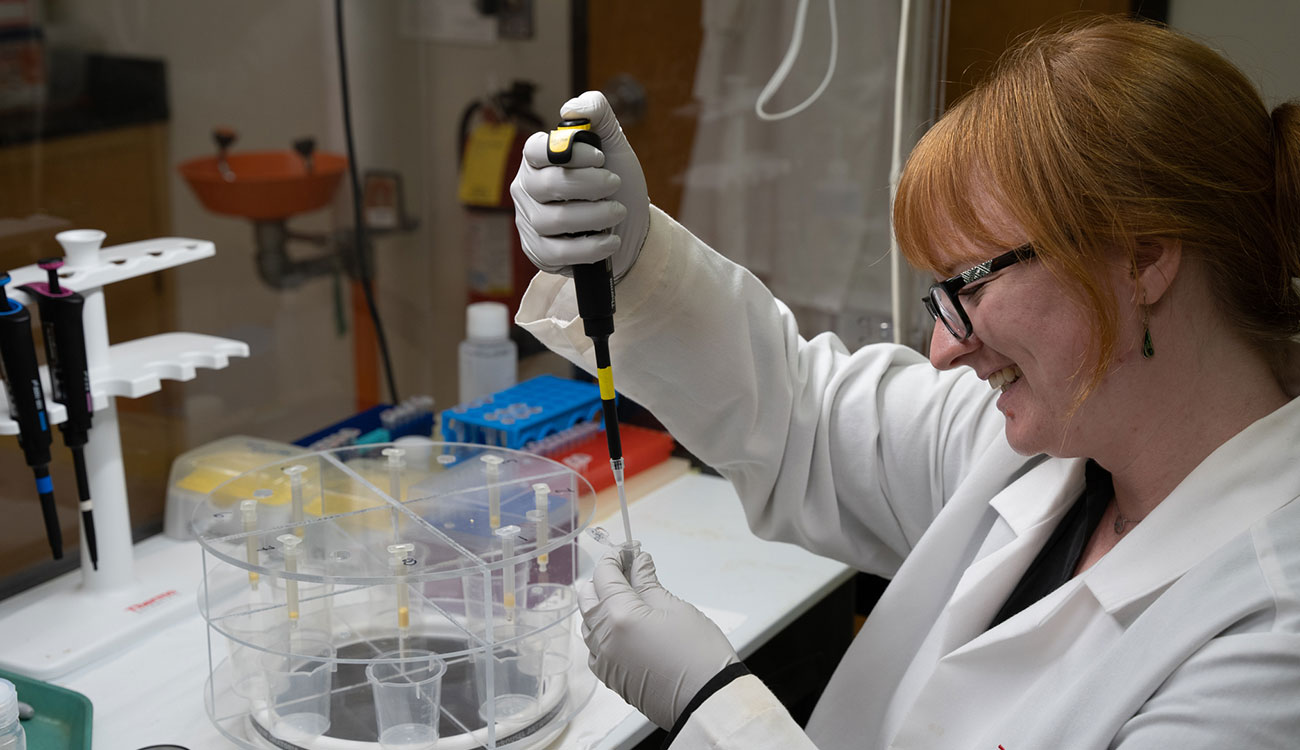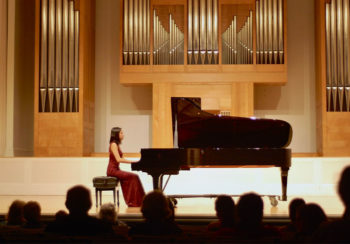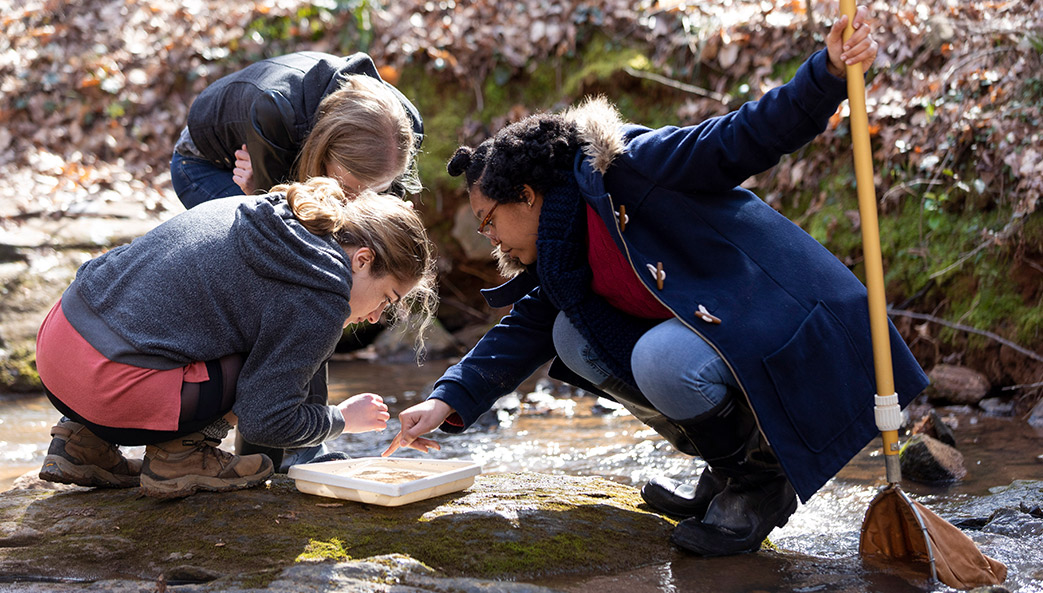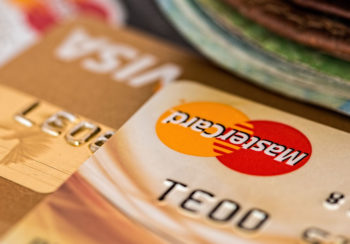For more than 40 years, scientists from the American Museum of Natural History have conducted research on St. Catherines Island, a barrier island off the Georgia coast. That work resulted in the 1981 rediscovery of the long-lost site of the Franciscan mission Santa Catalina de Guale (1566-1680) and the explorations of two large, constructed shell rings created on opposite sides of the island 5,000 years ago.
Four decades worth of artifacts and data are still being examined, and a collection of metal fragments was relatively untouched—until Alex Edwards came along. For the last five years, Edwards has investigated those metal fragments while also earning a master’s degree in geology at UGA.
Heavy metal
Edwards enrolled at UGA in 2017 after earning a Bachelor of Science at Boise State University in Idaho. As an undergraduate, she worked in a geochronology lab using ICP-MS—inductively coupled plasma mass spectrometry—to identify an object’s elemental or isotopic signature.
“I was fascinated by instrumentation and very interested in method development,” she said. “At the end of the day, I love chemistry. And in geology, I was more interested in geochemistry than anything else. I was just very interested in materials on a molecular scale.”
Edwards was looking for a place where she could learn more about instrumentation and follow her interest in estimating provenance—or finding the origin—of geologic materials and archaeological artifacts. She found the opportunity she was seeking at UGA’s Center for Applied Isotope Studies, the largest radiocarbon lab in the United States, which also has instrumentation to determine isotopic data in samples with geochemical signatures.
At CAIS, Edwards began analyzing metal fragments that were thought to be mission bells brought over during Spanish colonization. Metallurgy, the study in the properties of metals and their artifacts, has improved greatly as instrumentation has been refined over the last 30 years, according to Edwards.
“One of the issues is method development—if you’re given a metal, how can you analyze it?” she said. “I used ICP-MS, which involves using different calibrated voltages in a machine to pick up specific isotopes within a material. In this case, I was looking for lead.”
Working with the American Museum of Natural History, she first began analyzing samples taken from metal fragments found in the Galisteo Basin in New Mexico. Then she found out about the samples from St. Catherines Island, housed at the Fernbank Museum of Natural History in Atlanta.
“I thought it would be cool to include these two different geographic areas that are both part of Spanish colonization,” she said. “And to see if there are any isotopic differences between these two geographic groups, because the idea is that all of these bells came from the same place.”
Handing off history
Before Edwards arrived at UGA, researchers conducted elemental analysis on the samples from St. Catherines Island and identified them as bronze. But they also wanted to figure out whether or not they were actually bells.
“A lot of these fragments are segmented and they have some curvature to them, but it’s very difficult to tell if it’s actually a bell or not,” she said. “So we took into account things like thickness of the sample. Does it have curvature that you would expect in a bell? Are there any markings? There’s a lot of artifact analysis that comes into play.”
In order to identify the origin of the metal fragments, Edwards looked for lead—specifically an isotope of lead-204, which is primordial, or from the original geological source, and can be matched to geographic or geologic areas. It also allowed her to try and piece together the fragments, looking for matching isotopic signatures.
“What I’ve seen in the Southeast is that it might be possible,” she said. “Within different isotopes and their ratio values, we found that there are groupings that are distinguishable from one another and could correlate to the same bell.”
The bells are a mix of different metals, with each carrying its own signature. Because she doesn’t know the exact isotopic signature relating to the origin of each element, she’s not able to identify where they came from. That needs to be done with a much more in-depth process, one that’s beyond the scope of her master’s thesis.
“I started this project with a very set idea of what I was going to accomplish. I was going to go in, I was going to analyze these bells, and I was going to be able to tell you exactly where they came from,” she said. “It’s been really interesting how much this project has developed over the last five years. There’s been a lot of start, stop and go.”
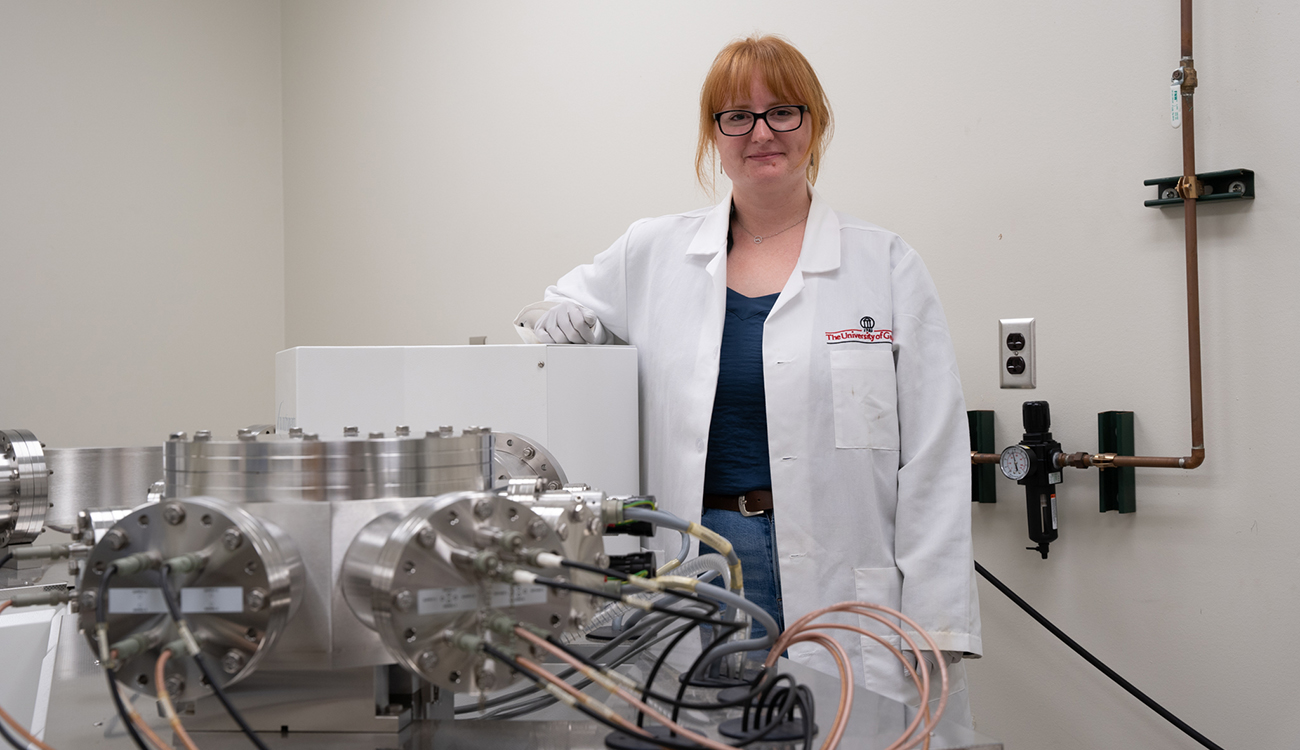
Like many researchers, Edwards faced obstacles with the COVID pandemic shutdown, which prevented her from being able to access the collections she needed for her samples. After finally getting her samples, she relied heavily on expertise from Doug Dvoracek, CAIS associate research scientist.
“Without his guidance on learning the instrumentation and understanding isotopic analysis, this project would have been very difficult to complete,” she said.
Edwards has been “a joy to work with,” according to Dvoracek, who praised her ingenuity in applying this technique to Spanish colonial artifacts for the first time.
“One of the beauties of Alex’s approach is that it left the artifacts completely undamaged. Not long ago, to get this quality of data, a researcher would have to choose between destroying a significant part of each fragment or settling for a ‘spot analysis’ from what’s likely to be an isotopically inhomogeneous object,” he said. “Alex was able to sample each fragment in a non-destructive way that gives the averaged [lead] isotopic signature of the entire object, yet leaves it completely undamaged. So next year, or 50 years from now, another researcher can pull these same bell fragments out of the Fernbank collection and have full access to the original artifact.”
Edwards, who graduated in May, hopes to share her data with the American Museum of Natural History, where the project originated.
“I’m interested in seeing where someone else takes this project, because I do feel like there are a lot more tests that can be done with these samples,” she said. “It’s a fascinating project that I feel can definitely evolve beyond just one person.”
Saved by the bell
Five years of working at CAIS—on her own project and on contracts for external clients—reinforced Edwards’ passion for instrumentation.
“I love to take things apart and put them back together,” she said. “What I love about instrumentation is the fact that when you put something back together, if it doesn’t work, you have to figure out why. I love hands-on problem solving.”
Edwards got this kind of experience on her own project, where she was hands on from the moment the lead was taken off the surface of a metal fragment all the way through the analysis. She also worked for CAIS clients on projects in geology, archaeology, ecology, biochemistry and other fields.
“CAIS is fantastic at giving students hands-on experience. I’m leaving the university with five years of work experience in laboratory practices,” she said. “The amount of knowledge that I’ve acquired from working there is incredible.”
After graduating, Edwards moved to Bozeman, Montana, where she took a position as a laboratory scientist at Bridger Analytical, an environmental lab. No doubt her problem-solving skills will be put to the test, but she welcomes the challenge.
“The thing I love about working in a lab is a lot of it is problem solving,” she said. “How do we accomplish the task at hand with what we have? I don’t want to ever stop learning.”



